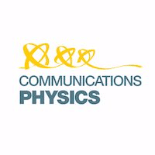
Communications Physics
Scope & Guideline
Exploring the universe of scientific communication.
Introduction
Aims and Scopes
- Quantum Physics and Quantum Information:
Research on quantum mechanics, quantum computing, entanglement, and quantum communication technologies, emphasizing advancements in quantum algorithms and quantum materials. - Condensed Matter Physics:
Studies related to the properties of condensed phases of matter, including superconductivity, magnetism, and electronic properties of materials, with a focus on novel phenomena and materials. - Optics and Photonics:
Investigations into light-matter interactions, optical devices, and photonic systems, including laser technologies, imaging techniques, and nonlinear optics. - Statistical and Mathematical Physics:
Theoretical and computational studies that apply statistical mechanics and mathematical models to understand complex systems, phase transitions, and critical phenomena. - Nanotechnology and Materials Science:
Research on the fabrication, characterization, and application of nanostructured materials, including their unique physical properties and potential technological applications. - Biophysics and Soft Matter:
Exploration of physical principles in biological systems and soft materials, focusing on the dynamics of biological processes and the properties of complex fluids. - Network Science and Complex Systems:
Analyses of the structure and dynamics of complex networks across various fields, including social, biological, and technological systems.
Trending and Emerging
- Quantum Technologies and Quantum Computing:
There is a significant increase in research related to quantum technologies, including quantum computing, quantum simulations, and quantum cryptography, driven by advancements in experimental and theoretical frameworks. - Topological Materials and Phases:
Research on topological phases of matter, such as topological insulators and superconductors, is gaining momentum, exploring their unique properties and potential applications in electronics and quantum computing. - Machine Learning and AI in Physics:
The integration of machine learning techniques in physics research is rapidly increasing, with applications ranging from data analysis to materials discovery and optimization of experimental setups. - Active Matter and Biological Physics:
Emerging studies on active matter systems, including biological systems and soft matter physics, highlight the complex behaviors driven by self-propelling entities and collective phenomena. - Complex Systems and Network Dynamics:
Research focused on the dynamics of complex systems, including social networks, ecological systems, and technological networks, is becoming increasingly prevalent, reflecting a broader interdisciplinary approach. - Non-Hermitian Physics:
An uptick in investigations into non-Hermitian systems and their unique properties, including potential applications in photonics and quantum mechanics, indicates a growing interest in this area.
Declining or Waning
- Classical Mechanics and Fluid Dynamics:
Research in classical mechanics, particularly fluid dynamics, has seen a decline in publications, possibly due to a shift towards more interdisciplinary and application-driven studies. - Traditional Thermodynamics:
Interest in classical thermodynamics appears to be waning in favor of more modern approaches that integrate quantum and statistical mechanics into thermodynamic studies. - Basic Instrumentation and Measurement Techniques:
Papers focusing solely on traditional measurement techniques and instrumentation without novel applications or theoretical advancements are becoming less common. - Static or Non-Interactive Systems:
Research centered on static systems or non-interactive models is decreasing, as there is a growing focus on dynamic, interactive, and complex systems.
Similar Journals

JETP LETTERS
Fostering Breakthroughs in Theoretical and Experimental ScienceJETP LETTERS, published by MAIK NAUKA/INTERPERIODICA/SPRINGER, is a prestigious journal in the field of physics and astronomy, which plays a pivotal role in disseminating groundbreaking research and innovative ideas since its inception in 1969. With an ISSN of 0021-3640 and an E-ISSN of 1090-6487, this journal aligns well with the interests of both seasoned researchers and emerging scholars, having achieved a 2023 category rank of Q3 for miscellaneous topics within physics and astronomy. Located in the United States at 233 SPRING ST, NEW YORK, NY 10013-1578, JETP LETTERS serves as a critical resource for its readership, offering exclusive insights and advancements across diverse areas of physics. While not open access, it hosts a collection of articles that refine theoretical approaches and experimental methods, providing both knowledge and inspiration to professionals and academics seeking to make impactful contributions to the scientific community. The journal’s quality is reflected in its Scopus ranking, where it stands at 39 out of 81 in the multidisciplinary category, placing it in the 52nd percentile, thus underscoring its significance and reliability as a scholarly outlet.

EUROPEAN PHYSICAL JOURNAL B
Bridging Theory and Application in Condensed Matter ScienceEUROPEAN PHYSICAL JOURNAL B (ISSN: 1434-6028, E-ISSN: 1434-6036), published by Springer, is a prominent international journal based in Germany that focuses on the fields of Condensed Matter Physics and Electronic, Optical and Magnetic Materials. With a converged publication timeline from 1998 to 2024, it caters to a diverse audience that includes researchers, professionals, and students striving for the latest advancements in these vital areas of physics. The journal is recognized with a Q3 ranking in both relevant categories for 2023, showcasing its solid yet notable standing within the academic community. Although currently without an H-index, its Scopus rankings reflect a percentile performance of 41st and 39th, respectively, indicating a growing influence among its peers. The journal offers open access options, ensuring that groundbreaking research is widely accessible and contributes to the collective knowledge within the scientific domain. By aiming to publish high-quality, well-researched articles, the EUROPEAN PHYSICAL JOURNAL B plays a crucial role in disseminating innovative findings and fostering collaboration in the field of physics.
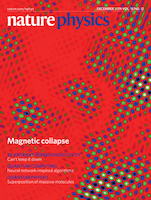
Nature Physics
Connecting Ideas, Inspiring Innovation in PhysicsNature Physics is a premier journal dedicated to publishing high-impact research in the realm of physics, brought to you by the esteemed NATURE PORTFOLIO. With its ISSN 1745-2473 and E-ISSN 1745-2481, this journal has established itself as a vital resource for the physics community, enjoying a remarkable Q1 quartile ranking in the Physics and Astronomy category for 2023 and securing an impressive Rank #5/243 and a 98th percentile ranking in Scopus. Since its inception in 2005, Nature Physics has become a catalyst for innovation, featuring cutting-edge research that encompasses a broad spectrum of physics disciplines. Although it operates under traditional subscription models, it maintains a commitment to accessibility through selective publications and editorial excellence. Positioned in Berlin, Germany, this journal is a must-read for researchers, professionals, and students who seek to stay at the forefront of advancements in physics.

Condensed Matter
Bridging Ideas in a Dynamic Scientific LandscapeCondensed Matter is a leading open-access journal dedicated to the diverse and dynamic field of condensed matter physics, published by MDPI since 2016. With its base in Switzerland, the journal aims to present a platform for researchers and professionals to share innovative findings and advancements in areas such as electronic, optical, and magnetic materials. As of 2023, it is ranked in the Q3 category for both condensed matter physics and electronic, optical, and magnetic materials, a testament to its relevance and growth within the scientific community. Researchers will find valuable insights through its accessible format, fostering collaboration and knowledge dissemination within this interdisciplinary field. With a commitment to enhancing the global dialogue in condensed matter studies, Condensed Matter invites contributions that explore theoretical and experimental approaches, thus pushing the boundaries of understanding in this crucial area of science.

Lithuanian Journal of Physics
Fostering Innovation in the World of PhysicsWelcome to the Lithuanian Journal of Physics, an esteemed publication helmed by the Lithuanian Physical Society, dedicated to advancing the field of physics and astronomy. Established in 2008 and continually publishing insightful research through 2024, this journal aims to provide a platform for high-quality scholarly articles that contribute to the understanding of various physical phenomena. With a steady presence in the academic landscape, the journal is currently ranked in the fourth quartile of the Physics and Astronomy category and is positioned at the 18th percentile in its Scopus ranking, reflecting its niche focus and accessibility for researchers and students alike. Although currently not operating under an open access model, the journal remains a vital resource for professionals seeking to stay informed on the latest developments in the field. The Lithuanian Journal of Physics invites contributions that inspire collaboration and innovation in physical sciences, making it an invaluable resource for the global scientific community seeking to expand knowledge within this dynamic field.
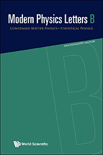
MODERN PHYSICS LETTERS B
Innovating research pathways in modern physics.MODERN PHYSICS LETTERS B, published by World Scientific Publishing Co Pte Ltd, is a pivotal journal in the fields of Condensed Matter Physics and Statistical and Nonlinear Physics. With an ISSN of 0217-9849 and an E-ISSN of 1793-6640, this journal has been a prominent platform for innovative physics research since its inception in 1996, catering to a global audience of researchers, professionals, and students alike. Its impact is reflected in its Scopus rankings, with a commendable position in the 65th percentile for Statistical and Nonlinear Physics and the 54th percentile for Condensed Matter Physics. Despite its classification in the Q3 quartile, MODERN PHYSICS LETTERS B is dedicated to advancing knowledge through rapid dissemination of high-quality research, thus playing a critical role in shaping future developments in its disciplines. Published in Singapore, the journal encourages contributions that address contemporary challenges and breakthroughs in physics, fostering an engaged scholarly community.
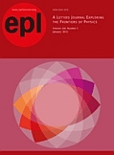
EPL
Elevating Knowledge in Physics and AstronomyEPL, a prominent journal published by IOP Publishing Ltd, stands at the forefront of the field of Physics and Astronomy. With a history of impactful contributions stretching from 1986 to 2024, EPL serves as a dynamic platform for researchers to disseminate their pioneering findings and innovative ideas. The journal, with a current category ranking of Q2 among its peers and a competitive Scopus rank of #101 out of 243 in the general physics and astronomy category, reflects its substantial reputation and contribution to the scientific community. Although it operates under a traditional subscription model, EPL's reach is extensive, enabling access to a diverse readership that includes academicians, industry professionals, and students alike. By fostering interdisciplinary collaboration and promoting rigorous research, EPL continues to play a vital role in shaping the future of physics and astronomy.

ACTA PHYSICA SINICA
Empowering Researchers with Groundbreaking InsightsACTA PHYSICA SINICA is a prominent journal published by the Chinese Physical Society, dedicated to the dissemination of groundbreaking research in the field of physics and astronomy. Established in 1993, this journal has consistently contributed to the scientific community by publishing high-quality articles that cover a wide range of topics within general physics and related disciplines. Although currently classified in Q4 of the physics and astronomy category by Scopus, ACTA PHYSICA SINICA plays an important role in fostering collaboration and communication among researchers in China and around the world. With a substantial readership, this journal is poised to remain a valuable resource for professionals, researchers, and students alike. By providing in-depth analysis and insights, it aims to advance the understanding and application of physical principles in various technological and scientific advancements. The journal is accessible via subscription, ensuring that contributors and readers can engage with the evolving landscape of physics research. For more information, visit the publisher's website.
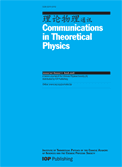
COMMUNICATIONS IN THEORETICAL PHYSICS
Pioneering research for a deeper understanding of physical laws.COMMUNICATIONS IN THEORETICAL PHYSICS is a distinguished journal published by IOP Publishing Ltd, focusing on the broad and evolving field of theoretical physics. With an ISSN of 0253-6102 and an E-ISSN of 1572-9494, this journal provides a platform for the dissemination of innovative research that contributes to the understanding of complex physical concepts. Situated in the United Kingdom, it has established itself as a pivotal resource from 1996 to 2024, achieving a commendable Q2 ranking in the category of Physics and Astronomy (miscellaneous) for 2023. With a Scopus ranking of #18 out of 81 in its category, demonstrating a 78th percentile, this journal plays a crucial role in enhancing scholarly communication among researchers, professionals, and students alike. Although it does not currently offer Open Access options, the journal's comprehensive scope and commitment to high-quality peer-reviewed research underline its significance in the scientific community, making it an essential reading for anyone engaged in theoretical physics.

JOURNAL OF THE PHYSICAL SOCIETY OF JAPAN
Empowering Scholars through Cutting-edge DiscoveriesThe JOURNAL OF THE PHYSICAL SOCIETY OF JAPAN, published by the Physical Society of Japan, has been at the forefront of advancing knowledge in the field of Physics and Astronomy since its inception in 1946. With a commendable reputation reflected in its Q2 ranking within its category for 2023, this journal serves as a vital platform for disseminating high-quality research and innovative concepts. Researchers and professionals alike can engage with cutting-edge studies and reviews that span a diverse range of topics pivotal to the physical sciences. Although the journal does not currently operate with an open access model, it maintains a robust impact on the global physics community, evidenced by its placement in the 59th percentile among a competitive pool of 243 journals. With an unwavering commitment to bridging theory and application, the JOURNAL OF THE PHYSICAL SOCIETY OF JAPAN continues to inspire and cultivate scholarly discourse and collaboration across disciplines.